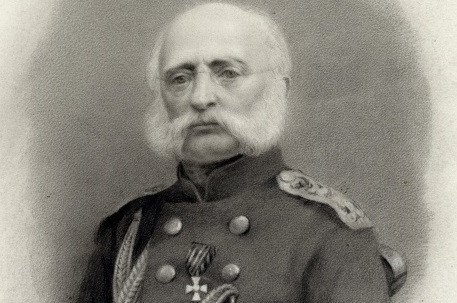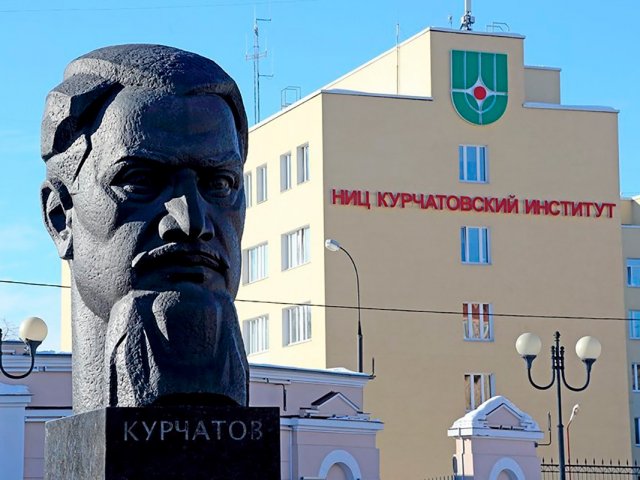Official:
Ferdinand Petrovich Wrangel. December 29, 1796 (January 9, 1797) – May 25 (June 6), 1870. Russian military commander and statesman, navigator and polar explorer, admiral, honorary member of the St. Petersburg Academy of Sciences.
Life and Work:
1. A Russian island uniquely located simultaneously in the Western, Eastern and Northern Hemispheres on the border of the East Siberian and Chukchi Seas bears the name of Ferdinand Petrovich Wrangel. The remarkable Russian navigator and polar explorer did not discover this island, but only determined its position based on the survey data.
2. However, Wrangel made many other scientific contributions: he led the expedition that described the north-eastern coast of Siberia; being the ruler of Russian America, he explored the western North American coast and established a meteorological observatory there; he was one of the founders of the Russian Geographical Society.
3. The Wrangels are an ancient family of Baltic Germans. Ferdinand’s grandfather was a chamberlain at the court of Peter III, which had its grave consequences. Once Catherine II came to power, he lost his enormous wealth and fled from persecution abroad.
4. Ferdinand Petrovich was born in Pskov in his uncle’s house. His parents, artillery major Peter Wrangel and his wife, Dorothea-Marguerite-Barbara, died early, and the boy was left to grow up in his uncle Wilhelm’s house.
5. Ten-year-old Ferdinand was sent to the Naval Cadet Corps. The first in the class of 99 cadets, Wrangel was promoted to midshipman and appointed to serve in Reval.
6. In 1817, Wrangel learned that the famous Russian navigator Vasily Golovnin was preparing to circumnavigate the world on the Kamchatka sloop and got a position in the sloop crew. Apart from Wrangel, the future famous sailors and explorers Fyodor Litke and Fyodor Matyushkin also embarked on this voyage around the world.
7. Ferdinand Petrovich, who distinguished himself during the voyage and learned a lot from the ship library, was – under Golovnin’s patronage – appointed to lead the expedition, which explored the coast of Siberia from the Indigirka River to the Kolyuchinskaya Bay. It was this expedition that used survey data to determine the location of the island, which was then named after Wrangel.
8. It is said that Ferdinand Wrangel was friends with the Decembrists. He could have taken part in the uprising and ended up serving his term in Siberia, rather than signing a honorary resignation from the post of the head of the Maritime Ministry in the rank of admiral. But fate saved him: Wrangel was appointed to lead a round-the-world expedition on the military transport Krotky and left St. Petersburg for two years.
9. Ferdinand Petrovich Wrangel was probably the first European to see Mount Denali both from the south and the north. At that time, this Alaskan peak was called Bolshaya Gora, and Wrangel, who was appointed ruler of the Russian colonies in the North America in 1829, undertook to explore Alaska. And not only that: the ruler of Russian America personally surveyed the entire west coast of America from the Bering Strait to California and founded a meteorological observatory in Sitka. Afterwards, already retired, Wrangel strongly opposed the sale of Alaska to the US.
10. Wrangel returned to Russia in 1836 by a roundabout route – this was his third circumnavigation of the world.
11. Upon his return to homeland, Wrangel settled down as a major statesman. He was promoted to rear admiral and appointed director of the Marine Ministry’s Ship Forests Department. At the same time, Ferdinand Petrovich served as director of the Russian-American Company.
12. At the end of the 1840s, Vice Admiral Wrangel retired and started to cooperate with the St. Petersburg Academy of Sciences. He was elected a corresponding member of the academy in 1827, and the Russian Geographical Society was created with his active participation. But the Crimean War returned the scientist to the civil service and appointed him to the high position of the minister of maritime affairs.
13. In 1855, Ferdinand Petrovich Wrangel was elected honorary member of the St. Petersburg Academy of Sciences. By this time, he had already authored a number of published scientific works, including Journal of a Voyage from Sitka to St. Petersburg, Historical Review of Voyages across the Arctic Ocean, and A Journey on the Northern Coast of Siberia and the Icy Sea. The latter work of the scientist was awarded the Demidov Prize in 1841.
14. Hard work undermined Wrangel’s health, and in 1857, he left the post of the head of the Maritime Ministry for health reasons and became a member of the State Council.
15. Ferdinand Petrovich spent the last years of his life in his estate in Governorat of Estonia, where he conducted daily meteorological observations. He died on the road – while passing through Dorpat, present-day Tartu.
16. Before leaving for America, Wrangel decided to get married. In Reval, he happened to see a girl who turned out to be the daughter of Baron Rossillon, director of schools in Governorat of Estonia. Two weeks later, Ferdinand Petrovich made an offer, she accepted, and a month later he took his young wife to the destination. Five of their nine children lived to adulthood, including Ferdinand Ferdinandovich Wrangel, a hydrologist and meteorologist.
17. Apart from Wrangel Island, situated in the Western, Eastern and Northern Hemispheres at once, two other islands bear Ferdinand Petrovich’s name: an island in the Alexander Archipelago, Alaska, USA, and an island in the Novaya Zemlya Archipelago.
18. Ferdinand Wrangel also found a way into fiction. Together with Christopher Columbus, he greatly helped the writer Andrey Nekrasov to invent a name for the legendary captain Christopher Bonifatievich Vrungel.






















